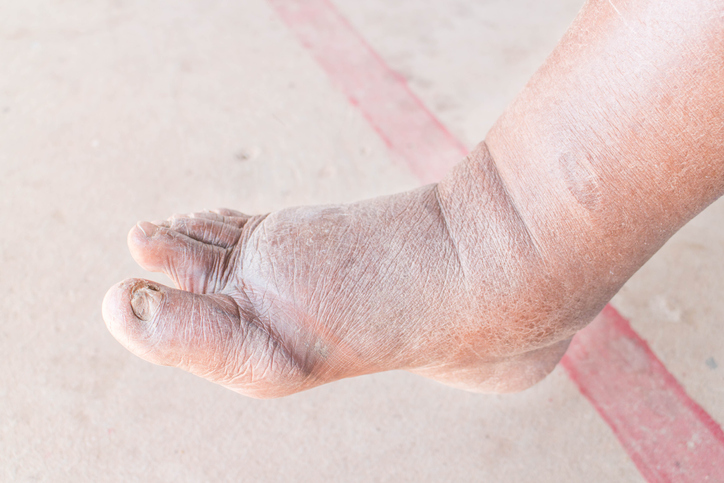Pain
Conventional Medical Treatments for Diabetic Neuropathy

Diabetic neuropathy affects approximately 50% of individuals with diabetes. It develops from long-term elevated blood glucose levels that gradually cause nerve damage.
Diabetic neuropathy is categorized into four main types: peripheral, autonomic, proximal and focal. Symptoms vary depending on the type of diabetic neuropathy and the affected area. Common symptoms include pain and numbness in the legs and feet that may spread to the arms and hands. Issues with the digestive system, blood vessels, heart, or urinary tract may also develop.
Although there is no known cure for diabetic neuropathy, medical treatments can help slow progression, relieve pain, manage complications, and restore function. Managing type 1 or type 2 diabetes with proper medical care, blood sugar monitoring, and a healthy lifestyle is critical in preventing or slowing the progression of diabetic neuropathy.
Pain from diabetic neuropathy can be severe, constant, and difficult to treat. Medical treatment options include the following:
- Anti-seizure medications can help ease pain associated with diabetic neuropathy. Pregabalin is an example of an anti-seizure medication that is FDA approved to treat diabetic neuropathy. Anti-seizure medications work by controlling nerve cells that transmit pain in the brain and other areas of the body. Potential side effects include, but are not limited to, dizziness and drowsiness.
- Antidepressants, including tricyclic antidepressants and serotonin-norepinephrine reuptake inhibitors (SNRIS), can ease pain associated with diabetic neuropathy. Examples of tricyclic antidepressants include amitriptyline, desipramine and imipramine. Side effects include, but are not limited to, drowsiness, dizziness, weight gain, dry eyes, and dry mouth. Serotonin-norepinephrine reuptake inhibitors may be prescribed to relieve nerve pain with fewer side effects than tricyclic antidepressants. SNRIs work by increasing serotonin and norepinephrine in the brain. Duloxetine is an SNRI that is FDA approved for the treatment of diabetic neuropathy. Side effects may include, but are not limited to, nausea, dizziness, decreased appetite, dizziness and constipation.
- Non-steroidal anti-inflammatory drugs (NSAIDs) can help ease pain. They are available both over the counter and by prescription. The dosage or type of prescription NSAIDs may differ from over-the-counter NSAIDs. Potential side effects include, but are not limited to, stomach issues and an increased risk of heart disease with prolonged use.
- Acetaminophen can help ease mild to moderate pain.
- Opioid medication may be prescribed to treat severe pain. Opioids typically provide immediate relief of breakthrough pain. Examples of opioids used to treat severe pain associated with diabetic neuropathy include tramadol and oxycodone. Potential side effects include, but are not limited to, constipation, drowsiness, confusion, nausea, and slowed breathing. A pain specialist should be consulted prior to use of opioids due to the risk of dependency and the dangers of driving, operating equipment, working, etc., during treatment with opioids.
- Local anesthetic injections or patches containing lidocaine may be used to numb the area affected by nerve pain.
- Capsaicin patch or cream can be used to treat nerve pain. It works by numbing and desensitizing nerve endings. A prescription patch with 8% capsaicin is FDA approved for diabetic neuropathy of the feet. A prescription capsaicin patch must be applied by a health care provider.


















